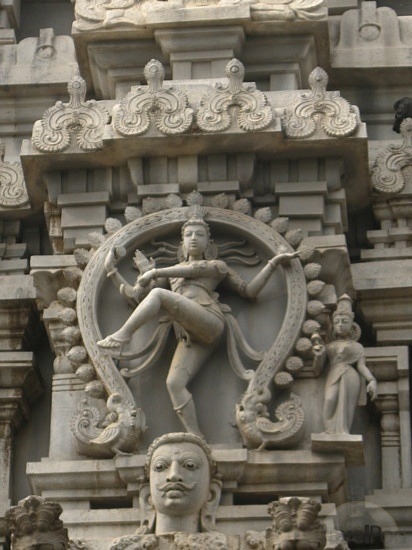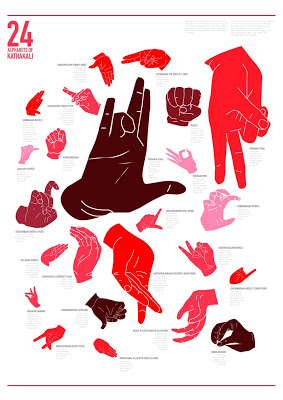In the beginning of all things, say the Indian myths, the Lord Shiva in his Cosmic Dance created the world and the universe out of chaos. The whole order of existence is expressed in a single legend of godly dance. This myth of the creation underlies the persistence of the dance in a land where the past constantly pokes its fingers into the present. It helps to explain more fully the dance figures that abound in temples and museums, and it allows a glimpse into the heart of Indian thought.

—The cosmic dance of Shiva symbolises the interplay of dynamic and static divine energy flow, containing the five principles of eternal energy – creation, preservation, destruction, illusion and emancipation.
Shiva dances in ‘Rudra Tandava’ or the dance of destruction in an aureole of fire, creating wild thunder storms all around the universe, even shattering the Sun, the Moon and stellar bodies with his matted hair, marks of ash on the forehead, trident and drum, lifting his left leg and balancing over a demon of ignorance, with snakes crawling over his arms, legs and braided hair that depict egotism….click image for source…
The oldest and purest of the four major dance styles in India, Bharata Natyam, has been called the feminine part of Shiva’s dance; Kathakali, literally “story play,” represents the masculine and terrifying aspect; Kathak with its softer style and Persian inspired costumes is a hybrid; Manipuri, from the northeast hills of Assam, is characterized by slow,dreamlike movements, while the dancer’s face remains immobile.
During the several exhausting hours that a complete performance of Bharata Natyam takes, the dancer is alone. There may be others dancing with her, but they merely amplify her interpretation; they are props and not principals. From the moment she enters and bows with folded hands to her teacher and the small cymbals begin to tinkle, the drums to beat, and the musicians start to chant, she is alone.

—This dance style would have become extinct but it got revived by the artists and art lovers in the 1940s. There were mainly four persons, who worked hard for the cause and Bala-saraswathi was one of them. She was one of the last of the devadasis and was a legend in her own time. E Krishna Iyer, a supporter for the cause of sadir, renamed this dance style as Bharatanatyam and gave it a new uprightness and persuaded the leading sabhas of Madras to feature the dance. —click image for source…
Through the seven stages of the dance, without change of costume or, ideally, help from lighting or the respite provided by a descending curtain, she must sustain her part. From passages of interpretative dance and stanzas of pure dance, she comes eventually to the songs. A singer chants lines whose meaning the dancer must interpret by facial expression and body mime.
As repetition follows repetition, she must intensify that meaning with all the virtuosity at her command. The final strophe of the dance is a tour de force of movement for movement’s sake, in which the dancer, by now completely immersed in her display, executes a succession of brilliant improvisations, leaping and spiraling in a final Shive-like frenzy which is dazzling for the very reason that the acrobatics are completely controlled.






 COMMENTS
COMMENTS